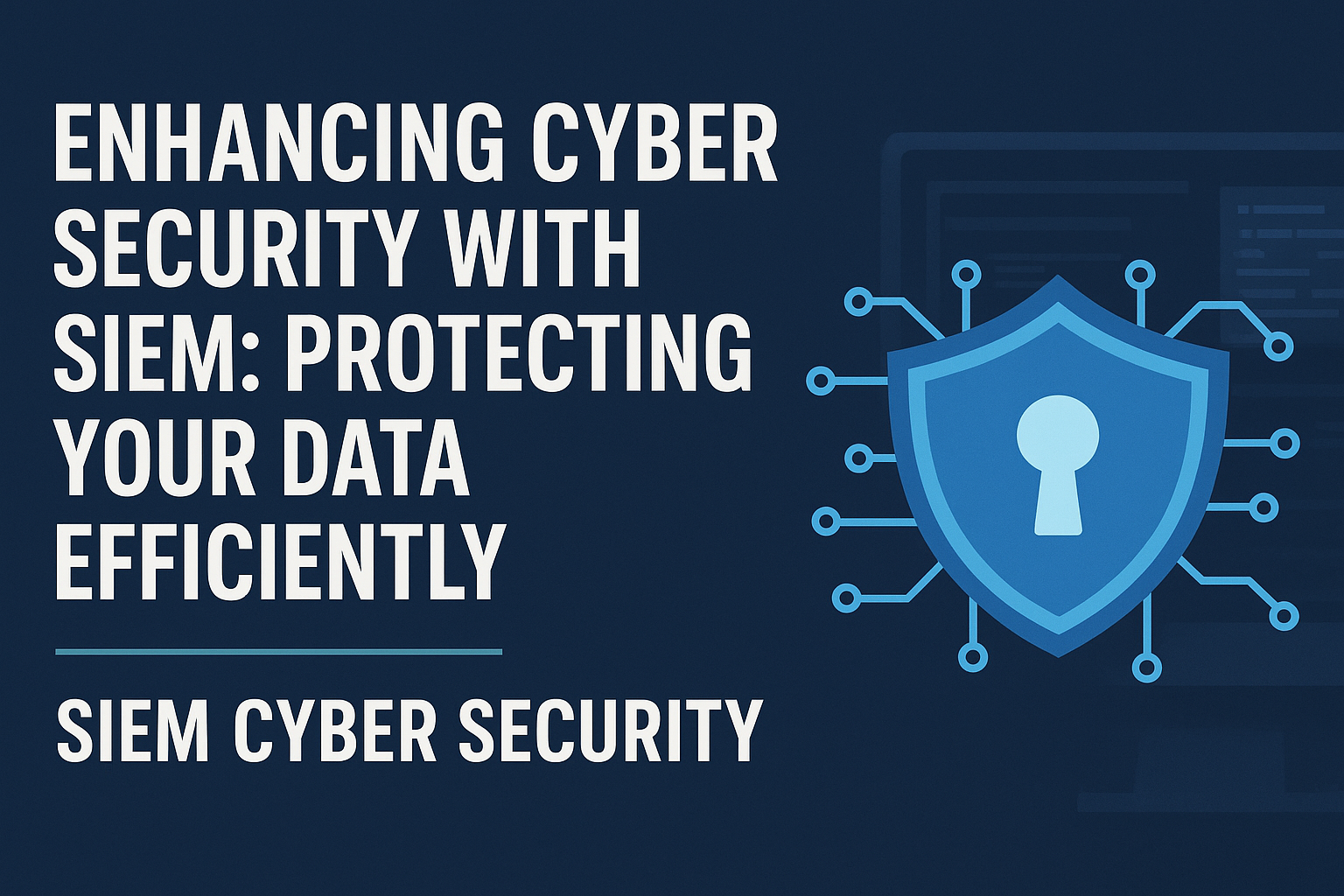Enhancing Cyber Security with SIEM: Protecting Your Data Efficiently
In today’s digital era, organizations face a growing number of cyber threats that can compromise sensitive data and disrupt business operations. Implementing SIEM cyber security solutions has become essential for proactively managing these threats and safeguarding critical information.
What is SIEM?
SIEM, or Security Information and Event Management, is a comprehensive cyber security approach that combines real-time monitoring, threat detection, and incident response. By collecting and analyzing security data from various sources, SIEM helps organizations identify vulnerabilities and mitigate risks before they escalate.
How SIEM Strengthens Cyber Security
- Real-Time Threat Detection
SIEM tools monitor network traffic, user activity, and system logs in real time. By analyzing patterns and detecting anomalies, SIEM identifies potential threats immediately, allowing IT teams to respond faster and prevent data breaches. - Centralized Security Management
Managing cyber security across multiple platforms can be complex. SIEM centralizes security data from different sources, including servers, applications, and cloud environments. This unified approach improves visibility and ensures that no security event goes unnoticed. - Automated Incident Response
Modern SIEM solutions integrate with automated response systems to quickly contain threats. Automated alerts and remediation workflows reduce the time required to respond to incidents, minimizing potential damage and downtime. - Compliance and Reporting
Regulatory compliance is crucial for businesses handling sensitive data. SIEM generates detailed reports and audit trails, making it easier to adhere to industry standards such as GDPR, HIPAA, and PCI DSS.
Benefits of Implementing SIEM
- Proactive Threat Mitigation: By identifying threats early, SIEM helps prevent data loss and reputational damage.
- Improved Operational Efficiency: Centralized monitoring reduces manual efforts, allowing security teams to focus on critical tasks.
- Enhanced Data Protection: Continuous monitoring ensures that sensitive information remains secure across all endpoints.
- Insightful Analytics: Advanced SIEM platforms provide actionable insights, helping organizations make informed security decisions.
Choosing the Right SIEM Solution
Selecting a SIEM platform depends on factors such as organization size, existing IT infrastructure, and specific security needs. Popular SIEM solutions include Splunk, IBM QRadar, and LogRhythm, each offering unique features and scalability options.
Conclusion
As cyber threats evolve, organizations must adopt advanced security measures to protect their data. SIEM cyber security solutions offer a proactive, centralized, and efficient approach to threat detection and incident response. By implementing SIEM, businesses can enhance data protection, achieve regulatory compliance, and maintain a secure IT environment.
Investing in SIEM is not just a security decision—it’s a strategic move to safeguard your organization’s future in a digital-first world.
